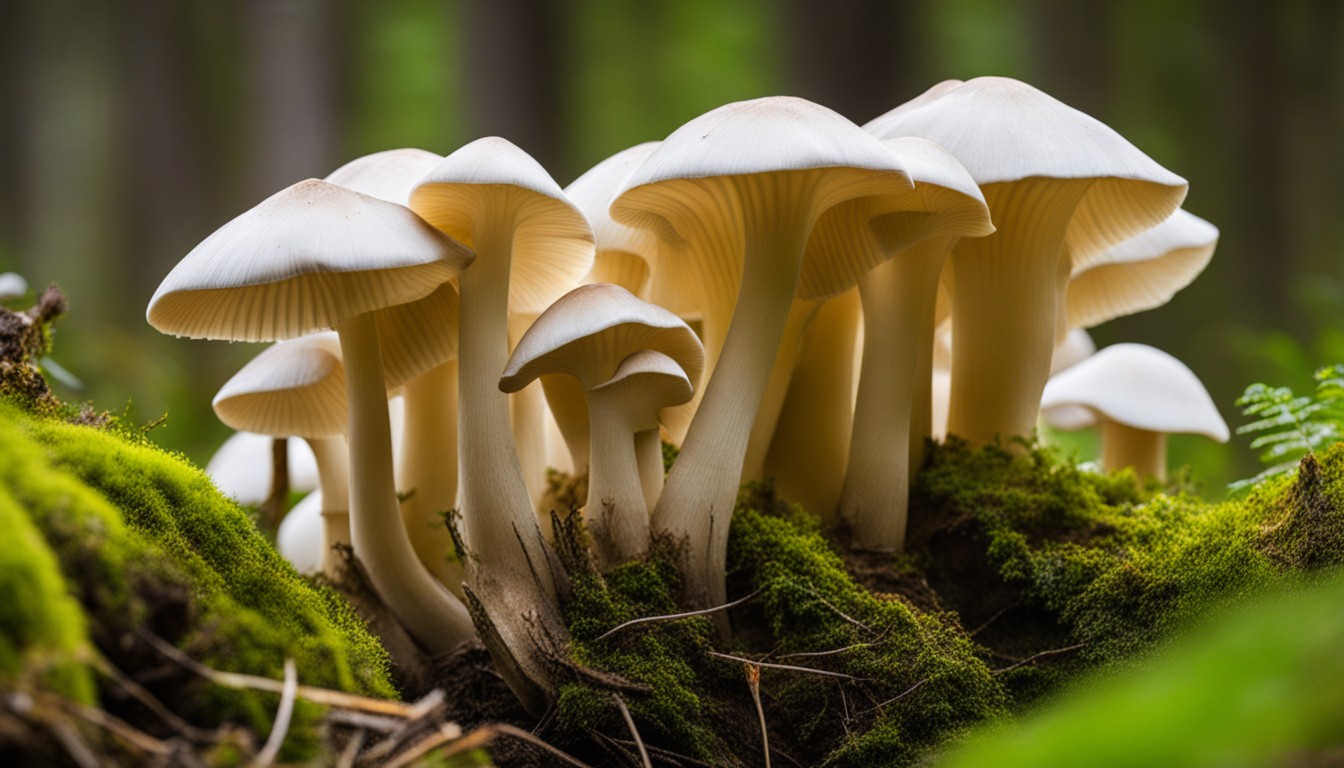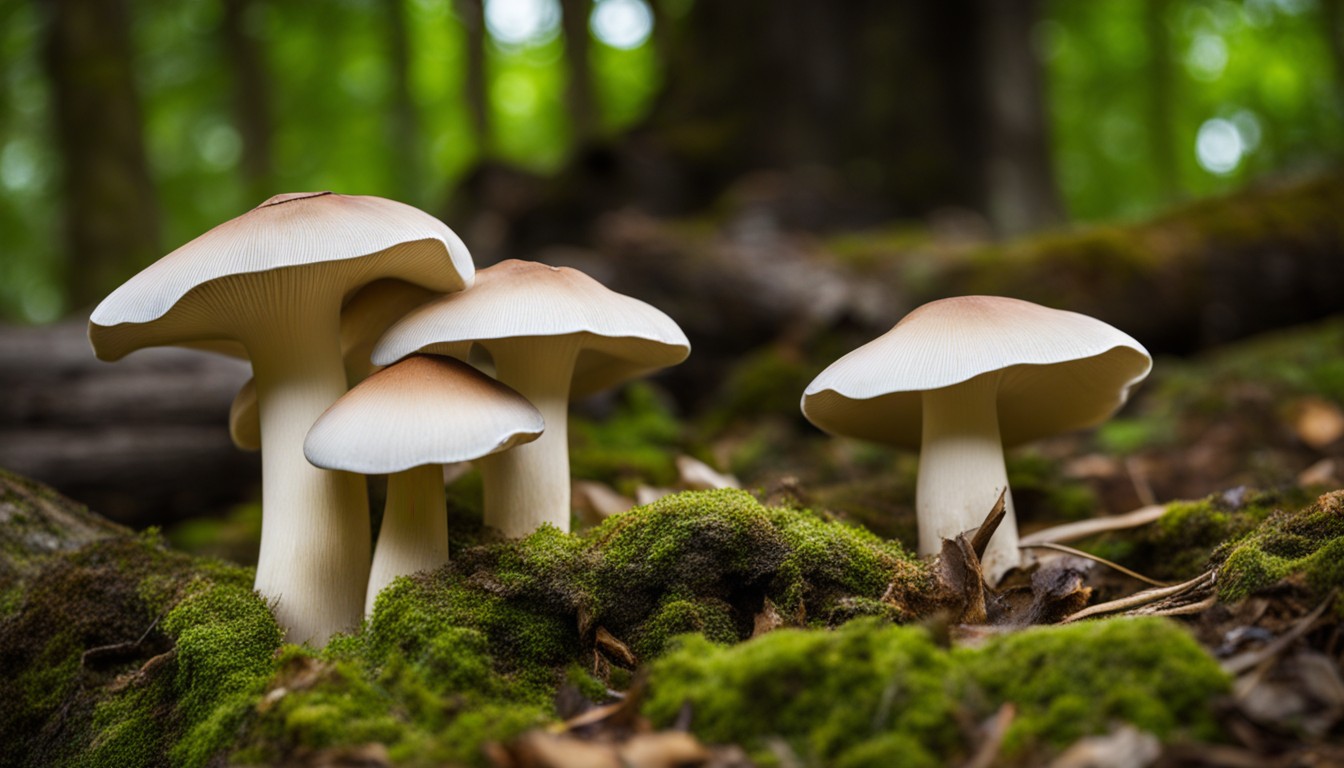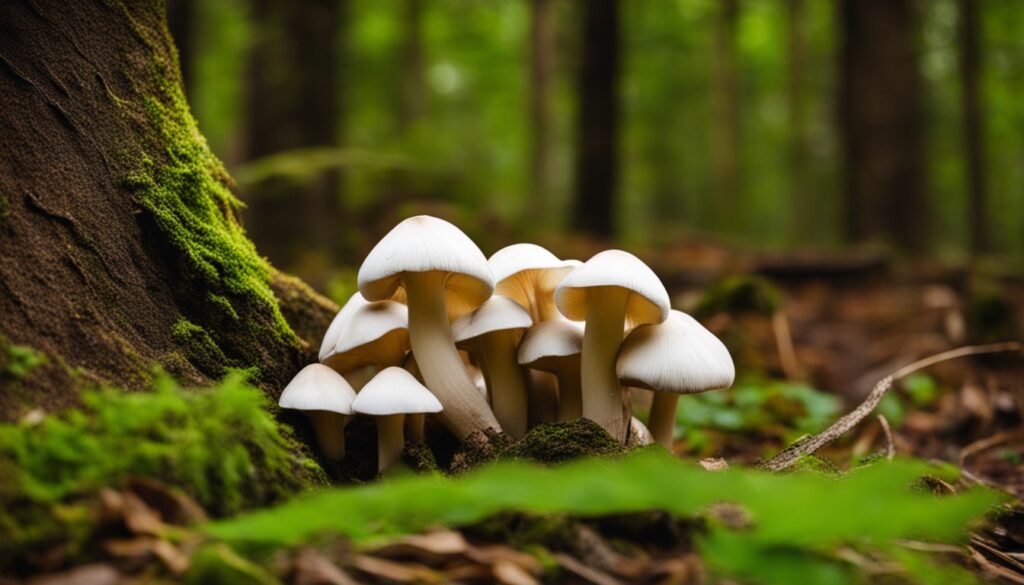Mushrooms in the yard are not only a common occurrence in Arizona, but they can also be a fascinating and diverse addition to your outdoor space. However, it is crucial to have a solid understanding of fungal growth to properly identify and manage these mushrooms. In this comprehensive blog post, we will delve into the various types of mushrooms that are commonly found in Arizona, provide detailed descriptions and illustrations for accurate identification, discuss the factors that contribute to their growth, and offer expert tips and strategies for effectively managing their presence in your yard. By the end of this guide, you will be equipped with the knowledge and tools necessary to maintain a beautiful and healthy yard while coexisting with the captivating world of mushrooms.
Types of Mushrooms in Arizona
Delving into the mushroom diversity in Arizona, it is a mix of both edible and non-edible varieties. A comprehensive understanding of these can aid in safe foraging and avoiding toxic species.
In Arizona, the fungi flora is abundant with an array of mushroom species. The ability to decode these various types enhances the knowledge of local biodiversity and promotes a balanced ecosystem.
Common Mushroom Species in Arizona
Arizona’s yard boasts an array of mushroom species, some of which are native and other invasive varieties. Knowledge of these common fungi will aid in proper identification and management.
- The ubiquitous ‘Fairy Ring Champignon’ (Marasmius oreades), usually found growing in a circular pattern on lawns.
- The quite common ‘Shaggy Mane’ (Coprinus comatus), easily recognized by its tall, white, shaggy cap.
- The often sought-after ‘Morel’ (Morchella spp.), highly prized by chefs and foragers.
- The beautifully distinct ‘Fly Agaric’ (Amanita muscaria) with its bright red cap and white spots.
- The rather inconspicuous ‘Conocybe’, a small brown mushroom often sprouting in yards after rains.
Toxic Mushroom Species in Arizona
Venturing into the world of mycology in Arizona warrants caution as there are several toxic mushroom species indigenous to the region, presenting a threat to both humans and pets.
- Death Cap: Highly toxic when consumed, characterized by a pale greenish yellow cap.
- Sacred Mushroom: Hallucinogenic properties, identifiable by their tall slender stems and convex caps.
- False Morel: Toxic if not cooked properly, appear as wrinkled and brain-like.
- Conocybe Filaris: A deadly lawn mushroom, recognized by its small, dainty size and pale brown color.
Identifying Mushrooms in Yard

Familiarize yourself with your yard’s fungal residents; understanding the various types of mushrooms is a vital first step. This recognition assists in distinguishing between beneficial mushrooms and fungi that might harm your yard.
Knowing distinctive mushroom attributes aids in maintaining a healthy yard by helping differentiate between harmful fungi and beneficial ones.
When identifying mushrooms in your yard, consider all visible parts of the fungus. From the shape and color of the cap to the gill structure underneath and even down to the stem’s characteristics, each feature plays a crucial role in classifying the common yard mushrooms.
Characteristics of Yard Mushrooms
Discovering mushrooms in your yard is more common than you might think. These fungi come in various shapes, sizes, and colors, each one exhibiting unique traits that set them apart.
- Distinctive cap shapes ranging from flat to conical
- Different coloration often varying from white, brown, to vibrant hues
- Variations in stem size and thickness
- Unique gill formations under the cap
- Presence or absence of a ‘ring’ around the stem
- Particular smell and texture
- Surface features like spots or scales
- Spore color, seen by creating a ‘spore print’
Using Field Guides for Identification
Field guides serve as a vital tool for identifying yard mushrooms in Arizona, enabling you to discern the specific types cultivated within the flora of your own backyard.
- Determine mushroom’s structure: Field guides lay out the basic structure of various species allowing you to recognize the specific characteristics of each.
- Match visual cues: Field guides come loaded with images to assist you in identifying the species by matching them with the mushroom you have found.
- Cross-referencing locations: Using the usual habitats and geographic range mentioned in field guides help you pinpoint the exact species.
- Reading Spore prints: Field guides provide information on obtaining and reading spore prints—an essential factor in identifying mushroom species.
- Consider mushroom’s maturity: Field guides help to understand the changes a mushroom goes through as it matures, which can significantly influence its appearance.
Consulting with a Mycologist
Seeking the expert insights of a mycologist can be essential when identification becomes a challenge or when questionable mushrooms emerge in large numbers. These professionals have in-depth knowledge, making them reliable resources in assessing the significance of mushrooms in your Arizona Yard.
- Confirming mushroom species when identification is beyond personal knowledge or field guides
- Understanding the role and impact of specific fungi in your yard
- Determining potential toxicity of unknown mushrooms
- Mapping a sustainable solution for excessive mushroom growth
- Educational initiatives to better understand the role of fungi in the ecosystem
- Proactive consultation for yards with a history of mushroom infestation
Causes of Fungal Growth in Yard

Arizona yards often harbor mushroom growth due to specific environmental conditions. Fungal blooms can be attributed to excessive moisture, decomposition of organic matter and improper yard maintenance, which create an ideal habitat for mushrooms to flourish.
To manage fungal growth effectively, understanding the root cause is essential. Overwatering, lack of proper drainage, or a buildup of organic material like fallen leaves or grass clippings can trigger mushrooms to sprout in your yard.
Excessive Moisture
Excessive moisture in your yard creates an ideal environment for fungi proliferation, laying a solid foundation for the growth and spread of mushroom species. Moisture acts as a life-giving elixir, enabling mycelium development, a vegetative part of the mushroom often hidden beneath the soil surface.
Rainy conditions or over-irrigation can lead to increased dampness in your Arizona yard, triggering mushroom infestations. Furthermore, poorly drained soils may sustain a moist environment conducive to fungal growth even during dry spells.
Therefore, being conscious of water usage and implementing effective drainage systems are essential components of fungal management strategies. By striking the right balance, it’s possible to discourage excessive mushroom growth while maintaining a healthy landscape.
Organic Matter Decomposition
Drawing a clear link between organic matter decomposition and mushroom growth, it can be established that fungi feast on decaying plant material, in turn, accelerating their propagation in your Arizona yard. This fungal behaviour forms a crucial aspect in the nature’s cycle of matter conversion.
When plant-derived organic materials start to decay, they create an environment conducive for mushroom genesis. The mixture of decaying matter and excessive moisture serves as an invitation for fungi, laying a perfect stage for a potential infestation in your yard.
Understandably, the more organic matter you have in your yard, the higher the chances for mushroom growth. Regular cleanup and disposal of such organic waste can largely help in preventing an unwelcome fungal spurt. Yard hygiene thus stands as an indispensable component in managing mushroom infestation.
Improper Yard Maintenance
Among the key errors in yard maintenance that boost fungal spread is neglecting to aerate the soil. This restricts air circulation and creates a favorable habitat for mushrooms.
Leaving old stumps and roots behind may invite a mushroom infestation. These rotting materials provide the perfect nutrition for fungi to thrive.
Without routine mowing, tall grass obstructs sunlight, impairs soil ventilation, and stimulates fungi growth. Frequent lawn care can keep fungal infiltrations in check.
Over-watering the lawn is also a common mistake. Excess water often leads to waterlogged soil, creating a breeding ground for mushrooms.
Piling up dead leaves, clippings, and organic debris in the yard might seem harmless, but such areas often serve as incubators for fungi spores, intensifying the mushroom problem.
Preventing Mushroom Growth in Yard
Taking definitive steps to curb mushroom multiplication can thwart a full-blown fungal invasion in your Arizona yard. These include steps such as improving drainage, removing organic debris and adjusting lawn care strategies accordingly.
Deploying preemptive tactics is the key to maintaining a mushroom-free Arizona yard. The focus should remain on curbing conditions conducive to fungal growth, resulting in fewer opportunities for mushroom proliferation.
Improve Yard Drainage
Inhibiting mushroom growth is largely reliant on bolstering yard drainage. Infestations often indicate water pooling in your yard, a precursor to fungus propagation. By diverting standing water or leveling areas prone to collection, you can significantly reduce the risk of unwanted fungal bloom.
Numerous methods exist for drainage improvement. Incorporating a system of trenches and channels, for instance, can effectively divert water away from your lawn. Adding drainpipes in strategic locations is another prudent solution.
Permeable landscaping materials, such as gravel or porous stones, provide another avenue for prevention. These materials encourage water absorption, keeping the soil efficiently drained and limiting mushroom growth.
Working with a professional landscaper may be the best course, particularly for more severe drainage issues. They not only have the expertise to identify the precise problem areas, but also the knowledge of effective solutions tailored to Arizona’s climate.
Removing Organic Debris
Highly concerning is the role of organic debris in mushroom infestation. By clearing dead leaves, uneaten fruits, and decomposing wood from your yard, you strike at the very heart of the issue, destroying the fungi’s food source and thereby crippling its ability to flourish.
Broken branches, leaf piles, or rotting tree stumps make an inviting home for fungi. Remove such debris from your garden promptly to drastically reduce the presence of mushrooms.
In countering fungal proliferation, organic debris removal is of critical importance. The less material mushrooms have to decompose, the smaller the amount that would sprout in your yard.
Do not disregard the collection of organic debris. If ignored, it becomes a breeding ground for unwelcome fungal growth. Prevent such infestations by maintaining a clean, debris-free yard.
Adjusting Lawn Care Practices
Modifying lawn care strategies to control mushroom infestations should be considered. A strategic mowing plan that doesn’t cut grass too short can be beneficial. Short grass promotes compact soil, highly preferred by fungi.
Consider casting a new perspective on lawn care to minimize fungal proliferation in Arizona yards. Shady, well-watered, densely-planted areas provide perfect conditions for mushrooms; adjusting these factors can curb their growth.
A long-term biotic balance can also be achieved by encouraging robust lawn health. Regular feeding, consistent watering, and proactive pest control strategies all contribute to integral lawn strength, keeping opportunistic fungi at bay.
Managing Mushroom Infestation

Hunting for mushrooms with protective gloves and disposing them into sealable bags, you can manually keep an infestation at bay. Also, you may opt for chemical fungicides, though their long-term effect on your yard’s ecosystem should be factored in.
While some advocate total eradication, maintaining a balance is vital. Rather than wiping out all fungi, promoting beneficial ones can manage harmful species sustainably, keeping your yard healthy.
Manual Removal
When it comes to physically removing mushrooms, the task may seem daunting but it’s not. Regular monitoring of the yard, followed by prompt action upon spotting a mushroom ensures maximum extraction efficiency. Mushrooms are easy to pull out by hand. Be sure to wear protective gloves and discard the mushrooms safely.
The effectiveness of a manual approach is pristine. Opting for physical removal allows the assurance of exact identification and execution. In fact, it’s the most precise way to get rid of unwanted fungi in your yard.
Concerned about regrowth? Manual removal controls that too. However, it’s vital to remember roots remain in soil after mushroom extraction. Therefore, consistent monitoring and reapplication of the removal process is needed to prevent regrowth.
The entire process exhibits first-hand control over infestation. It provides a direct, hands-on approach to curtailing mushroom growth in the yard, making it easier to acknowledge and solve the issue.
Don’t worry about the process disturbing your well-kept yard. When done properly, mushroom removal does not cause significant disruptions to the lawn. It’s an effectual and non-intrusive method for eliminating unwanted fungi, keeping your Arizona yard mushroom free.
Chemical Treatments
Chemical treatments, although often perceived as a poison, can play a pivotal role in managing yard mushrooms. Their efficacy lies in their ability to hinder fungal development, while minimizing impact on other plants.
Nonetheless, chemical treatments should be employed judiciously. Neglecting to consider their potential side effects, like soil sterility or harm to beneficial fungi, risks upsetting the intricate ecological balance of your yard.
The chemistry of fungus management is not devoid of its challenges. Evaluating the pros and cons, and seeking professional advice before application, can ensure optimal results.
On the upside, when applied appropriately, these treatments may effectively quell mushroom infestations. They could help secure the health of your yard, averting potential damage exerted by excessive fungal growth.
Promoting Beneficial Fungi
Embracing the ‘Good Fungi’ is crucial for a balanced yard ecosystem. Certain mushroom species actively contribute to the health of your soil by decomposing organic matter and facilitating nutrient recycling.
An abundance of these beneficial fungi can effectively restrain the expansion of harmful, toxic mushrooms by occupying space and consuming available resources.
Creating a healthy fungal community involves fostering conditions favourable to beneficial mushroom growth. This could entail maintaining moderate soil moisture and leaving a few organic debris to provide nourishment.
Utilizing mushroom compost or mycorrhizal products can also encourage beneficial fungi. These products can promote a diversity of soil microorganisms, creating a robust and resilient yard ecosystem.
Frequently Asked Questions about Managing Mushrooms in Yard Arizona
What are the common types of mushrooms found in yards in Arizona?
In Arizona yards, you may come across various types of mushrooms, including but not limited to Agaricus, Amanita, Coprinus, and Lepiota species. These mushrooms can vary in size, shape, color, and texture, adding diversity to your yard’s ecosystem.
How can I identify mushrooms in my yard?
To identify mushrooms, carefully observe their cap shape, color, gills, stem, and spore color. It is recommended to consult field guides or seek assistance from a mycologist for accurate identification. By familiarizing yourself with key identification features, you can distinguish between harmless and potentially harmful mushrooms.
Are mushrooms harmful to my yard or household?
While most mushrooms in yards are harmless, some species can cause damage to lawns or pose health risks if consumed. Fungal growth in the yard usually indicates the presence of decaying organic matter, which may require proper management to prevent any adverse effects on your yard’s health.
What are some effective strategies for managing mushroom growth in my yard?
To manage mushroom growth, maintain proper yard drainage by addressing any water accumulation issues. Remove decaying organic matter, such as fallen leaves or dead tree stumps, as they provide a favorable environment for mushroom growth. Regularly mowing your lawn and ensuring adequate sunlight and air circulation can also help reduce mushroom growth.
How can I prevent mushroom infestations in my yard?
To prevent mushroom infestations, it is crucial to implement good yard maintenance practices. Avoid overwatering, as excessive moisture promotes fungal growth. Improve soil drainage to prevent water from pooling. Regularly inspect and remove fallen leaves or debris from your yard, as they can create an ideal habitat for mushrooms to thrive.
Can I eat the mushrooms growing in my yard?
It is strongly advised not to consume any randomly picked mushrooms from your yard, as many wild mushrooms can be toxic or even deadly. Only consume mushrooms from reliable sources or consult an expert mycologist, ensuring proper identification and safety.
When should I seek professional help for managing mushrooms in my yard?
If you are unable to properly identify mushrooms, suspect the presence of toxic species, or encounter extensive mushroom infestations that are beyond your control, it is recommended to seek assistance from a professional arborist or mycologist. They have the expertise to accurately identify mushrooms and provide appropriate management techniques.
Remember, if you are uncertain about any mushrooms in your yard, it’s best to err on the side of caution and refrain from consumption or contact with them. Always prioritize your safety and seek expert guidance when needed. By understanding the different aspects of mushroom management, you can effectively maintain a healthy and vibrant yard environment.
Conclusion
Final thoughts on managing yard mushrooms manifest in the form of the continuous observation and maintenance of one’s green spaces in unravelling the mycelium. Appropriate measures to control the fungal tide in Arizona end on the note of observing regular and conscious yard care.
A concise conclusion to Arizona’s mushroom management revolves around the adoption of safe and eco-friendly prevention methods. Taming the fungal tide demands diligence in yard care, awareness of local species, and a keen eye for changes.
- Observe and maintain green spaces regularly to control fungal growth
- Control the ‘Fungal Tide’ with regular and conscious yard care
- Adopt eco-friendly prevention methods for mushroom management
- Be diligent in yard care for effective mushroom management
- Stay aware of local species of mushrooms
- Keep an eye out for sudden changes in your yard

